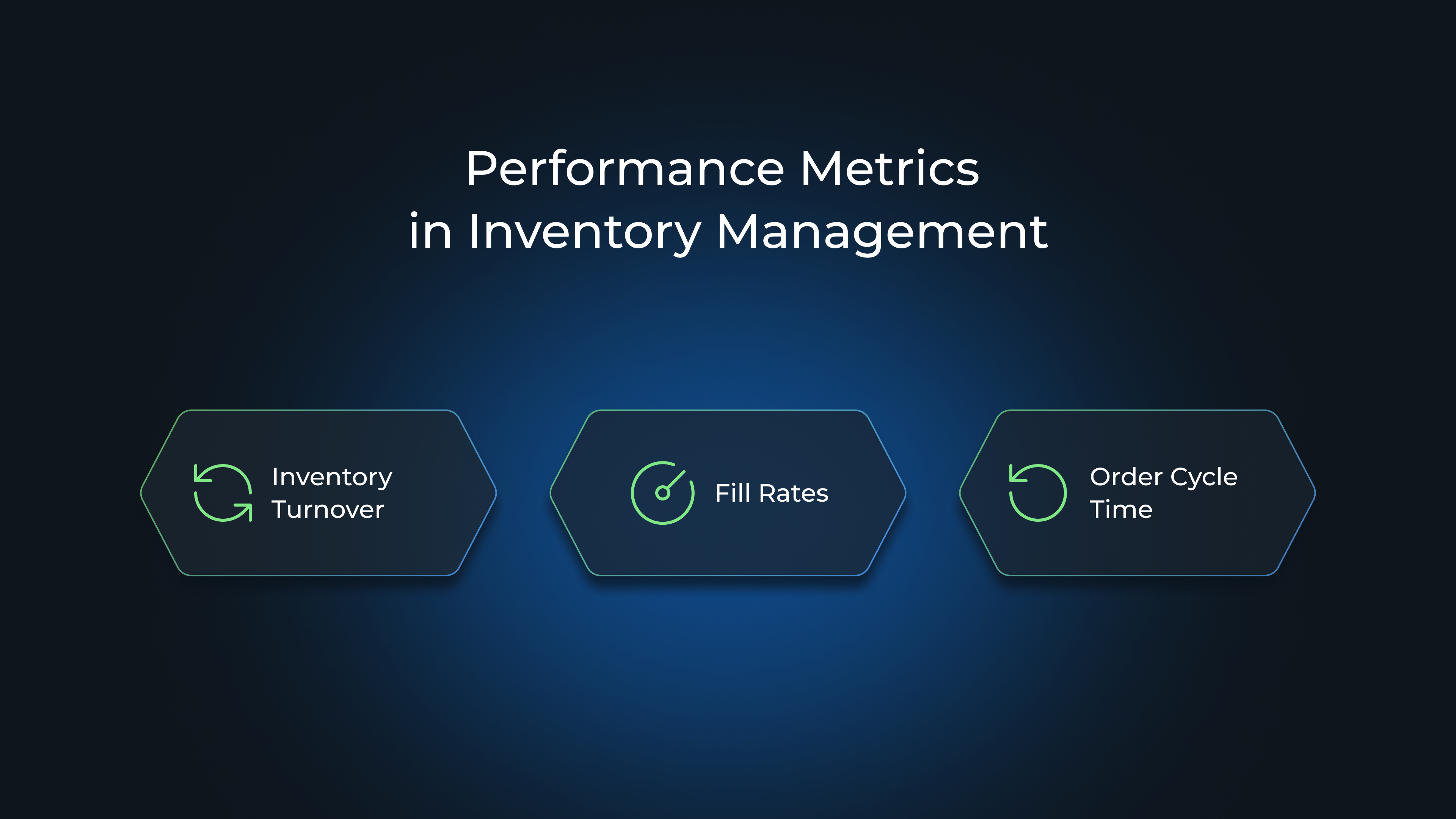At WeSoftYou, we understand the paramount significance of effective inventory management in businesses. In this article, we will guide you through the process of creating a custom inventory management system, tailored to your specific needs, to optimize your operations efficiently.
Inventory Management in Retail
Inventory management plays a pivotal role in the world of retail, serving as the backbone that ensures the seamless functioning of businesses. It involves the comprehensive oversight of every aspect of a product’s lifecycle, from procurement to sales.
In the realm of retail, where the fine balance between supply and demand can make or break a business, effective inventory management is nothing short of essential. It empowers retailers to maintain optimum stock levels, avoiding the dual pitfalls of overstocking that ties up capital and storage space and stockouts that result in lost sales and disgruntled customers.
Furthermore, it plays a critical role in meeting customer expectations by ensuring products are consistently available when and where they are needed, ultimately bolstering customer satisfaction and the overall profitability of the business. In our step-by-step guide on Inventory Management Systems, we will delve deeper into the best practices and tools to streamline this indispensable aspect of retail operations.
What is Inventory Management?
Inventory management software involves accurately tracking stock levels, monitoring demand patterns, and making data-driven decisions to replenish stock in a timely manner. By maintaining a well-balanced inventory, businesses can meet customer demands while avoiding excessive carrying costs.
Accurate tracking of stock levels is crucial for effective inventory management. This can be done through the use of barcode scanners, inventory management software, or manual tracking methods. By knowing exactly how much stock is available at any given time, businesses can make informed decisions about when and how much to reorder.
Monitoring demand patterns is another important aspect of inventory management. By analyzing sales data and customer behavior, businesses can identify trends and patterns that can help them anticipate future demand. This allows them to adjust their inventory levels accordingly, ensuring that they have enough stock to meet customer needs.
Data-driven decision-making is a key principle of inventory management. By analyzing data on sales, customer behavior, and market trends, businesses can make informed decisions about when to reorder, how much to reorder, and which products to prioritize. This helps them optimize their inventory levels and reduce the risk of stockouts.
How to Create an Inventory Management System?
Now that we understand the importance of inventory management, let’s explore the steps to create a custom system tailored to your unique business needs.

Inventory management is a critical aspect of any business, as it directly impacts the efficiency and profitability of operations. A well-designed inventory management system enables businesses to optimize stock levels, reduce costs, and improve customer satisfaction. By creating a custom system, you can address the specific challenges and requirements of your business, ensuring a seamless and effective inventory management process.
Step 1. Identify Your Inventory Needs
Before developing a custom inventory management system, it is crucial to identify your specific inventory needs. This involves assessing factors such as product variety, demand patterns, supplier relationships, and order fulfillment processes.
For example, if you are a retail business with a wide range of products, you may need a system that allows you to track individual items and their variants. On the other hand, if you are a manufacturing company, you may require a system that focuses on raw material inventory and production planning. By understanding your inventory needs, you can design a system that aligns with your business goals and processes.
Step 2. Design Your Custom System
Once you have a clear understanding of your inventory needs, the next step is to design custom inventory management systems. This includes determining the necessary data points to track, establishing inventory categorization methods, and defining reorder points and safety stock levels.
When designing your system, it is important to consider scalability and flexibility. As your business grows and evolves, your inventory management needs may change. Therefore, your custom system should be able to accommodate future expansions and modifications. Additionally, integrating automation and data analytics capabilities can further enhance the efficiency and accuracy of your inventory management processes.
Step 3. Implement Your Inventory Management System
After designing your custom system, it’s time to implement it into your business operations. This involves training staff on the new system, integrating it with existing software platforms, and setting up data collection processes. Regular monitoring and system adjustments are crucial to ensuring its ongoing effectiveness.
During the implementation phase, it is essential to communicate the benefits of the new system to your staff. Providing comprehensive training and support will help them adapt to the changes and fully utilize the system’s capabilities. Integrating the custom inventory management system with other software platforms, such as point-of-sale systems or enterprise resource planning (ERP) software, can streamline data flow and improve overall operational efficiency.
Furthermore, establishing robust data collection processes is vital for accurate inventory tracking. This may involve using barcode scanners, RFID technology, or manual data entry methods, depending on the nature of your inventory. Regularly monitoring key performance indicators (KPIs) and analyzing data can provide valuable insights for optimizing inventory levels, identifying trends, and making informed business decisions.
In conclusion, creating a custom inventory management system requires careful planning and consideration of your business needs. By identifying your inventory requirements, designing a tailored system, and implementing it effectively, you can streamline your inventory management processes and drive business growth.
Key Features of an Inventory Management System
An effective custom inventory management system should possess specific key features to meet your business requirements.
Managing inventory effectively is crucial for any business to ensure smooth operations and maximize profitability. An efficient inventory management system can streamline processes, optimize stock levels, and minimize costs. Let’s explore some key features that make an inventory management system effective.
Real-Time Inventory Tracking
Real-time inventory tracking allows you to have up-to-date visibility of your stock levels. This feature enables proactive decision-making and helps prevent stockouts by triggering reorder points when inventory reaches predefined thresholds.
With real-time inventory tracking, you can monitor the movement of goods from the moment they enter your warehouse to their final sale. This level of visibility helps you identify any discrepancies, such as shrinkage or theft, and take immediate action to rectify the situation. Additionally, it allows you to accurately forecast demand and plan your inventory replenishment accordingly.
Demand Forecasting
Accurate demand forecasting is a crucial element of inventory management software. By gathering historical data, analyzing market trends, and implementing forecasting algorithms, you can anticipate future demand patterns and adjust your inventory levels accordingly.
With demand forecasting, you can avoid overstocking or understocking situations. Overstocking ties up capital and increases the risk of obsolescence, while understocking leads to lost sales and dissatisfied customers. By accurately predicting demand, you can optimize your inventory levels, reduce carrying costs, and improve customer satisfaction.
Automated Reordering
An automated reordering feature simplifies the replenishment process by generating purchase orders or automatically placing orders with suppliers when inventory falls below predetermined levels. This helps to eliminate manual errors and save time.
Automated reordering takes the guesswork out of inventory management. It ensures that you never run out of stock by automatically triggering purchase orders based on predefined reorder points. This feature not only saves time but also reduces the risk of human error associated with manual reordering processes. By automating the replenishment process, you can focus on more strategic tasks and ensure a seamless supply chain.
In conclusion, an effective inventory management system should have real-time inventory tracking, demand forecasting, and automated reordering features. These features enable businesses to optimize their inventory levels, improve customer satisfaction, and reduce costs. Investing in a robust inventory management system can provide a competitive advantage and contribute to the overall success of your business.
Main Success Factors of an Inventory Management System
Once you have implemented your custom inventory management system, it’s important to regularly evaluate its performance and make any necessary adjustments.
Implementing an inventory management system is a significant step towards improving the efficiency and profitability of your business. However, the work doesn’t end with the implementation. To ensure that your system is delivering the desired results, you need to continuously monitor and evaluate its performance.
There are several key performance indicators (KPIs) that can help you assess the effectiveness of your inventory management system. These KPIs provide valuable insights into various aspects of your system’s performance and help you identify areas for improvement.
Key Performance Indicators for Inventory Management

Tracking key performance indicators (KPIs) allows you to gauge the effectiveness of your inventory management software. KPIs such as inventory turnover, fill rates, and order cycle time provide valuable insights into your system’s performance and help identify areas for improvement.
Inventory turnover is a crucial KPI that measures how quickly you are able to sell your inventory. A high inventory turnover indicates that your products are in demand and that you are effectively managing your stock levels. On the other hand, a low inventory turnover may suggest that you have excess inventory or that your products are not selling as quickly as expected.
Fill rates measure the percentage of customer orders that can be fulfilled from available inventory. A high fill rate indicates that you have sufficient stock to meet customer demand, while a low fill rate may suggest that you need to improve your inventory forecasting or replenishment processes.
Order cycle time measures the time it takes for an order to be processed, from the moment it is placed to the moment it is delivered to the customer. A shorter order cycle time indicates that you are able to fulfill orders quickly and efficiently, which can lead to higher customer satisfaction and repeat business.
Regular System Reviews and Adjustments
From our experience, continuous improvement is key to maintaining an effective inventory management system. Regularly reviewing and analyzing system data, customer feedback, and market trends enables you to make informed adjustments and optimize your inventory management practices.
System reviews should be conducted on a regular basis to ensure that your inventory management system is aligned with your business goals and objectives. By analyzing system data, you can identify any bottlenecks or inefficiencies in your processes and take appropriate actions to address them.
Customer feedback is another valuable source of information for evaluating your inventory management system. By listening to your customers’ experiences and suggestions, you can gain insights into areas where your system may be falling short and make the necessary improvements to enhance customer satisfaction.
Market trends also play a significant role in evaluating the success of your inventory management system. By staying up-to-date with industry trends and changes in customer demand, you can proactively adjust your inventory levels and product assortment to meet evolving market needs.
In conclusion, evaluating the success of inventory management systems is an ongoing process that requires continuous monitoring, analysis, and adjustment. By tracking key performance indicators, conducting regular system reviews, and staying informed about customer feedback and market trends, you can ensure that your system is performing optimally and driving the desired business outcomes.
Challenges in Inventory Management
Despite implementing a custom inventory management software, certain challenges may arise. Being aware of these challenges and having strategies to overcome them will help ensure smooth operations.
Inventory management is a critical aspect of any business, as it directly impacts customer satisfaction, profitability, and overall efficiency. However, even with a well-designed system in place, there are several common challenges that businesses often face. Let’s explore some of these challenges and the strategies to overcome them.
Data Inaccuracy
Data inaccuracies can occur due to human errors, system glitches, or poor data collection processes. These inaccuracies can lead to incorrect inventory levels, delayed shipments, and poor decision-making. To overcome this challenge, it is essential to regularly audit and validate your inventory data. This can involve conducting physical inventory counts, comparing data from different sources, and implementing automated data validation processes. By ensuring the accuracy of your inventory data, you can make informed decisions and avoid costly mistakes.
Inventory Costs
Balancing inventory levels and costs is a delicate task. Excessive inventory ties up capital and increases carrying costs, while insufficient stock leads to missed sales and dissatisfied customers. To effectively manage inventory costs, businesses can implement various strategies. One such strategy is just-in-time (JIT) inventory management, which involves ordering and receiving inventory only when needed. This approach minimizes holding costs and reduces the risk of obsolete inventory. Additionally, negotiating favorable terms with suppliers, such as volume discounts or extended payment terms, can help reduce costs and improve cash flow. By adopting these cost optimization strategies, businesses can strike a balance between inventory levels and costs, ensuring optimal financial performance.
Supplier Issues
Sourcing reliable suppliers is crucial for maintaining a smooth inventory management process. However, supplier-related issues can disrupt operations and lead to stockouts or delays. To mitigate these challenges, businesses should focus on developing strong supplier relationships. This can involve regular communication, sharing forecasts and demand projections, and collaborating on inventory planning. Negotiating favorable terms, such as flexible delivery schedules or guaranteed availability, can also help minimize disruptions. Additionally, regularly evaluating supplier performance based on metrics like on-time delivery and product quality can help identify potential issues early on. By proactively managing supplier relationships, businesses can minimize inventory-related issues and ensure a steady supply chain.
By following this step-by-step guide to creating a custom inventory management software, you can mitigate the risk of stockouts and optimize your business operations. At Wesoftyou, we have expertise in software development and can assist you in creating a tailored inventory management system that meets your specific requirements. Contact us today for a free consultation or project estimation.
FAQ
The cost of an inventory management system can vary significantly depending on several factors, including the complexity of the system, the size of the business, the specific features and functionalities required, and whether you opt for a cloud-based or on-premises solution. It can range from a few hundred dollars for small businesses using basic software to several thousand dollars for larger organizations with more extensive and advanced inventory management needs.
An inventory management software works by automating and streamlining the management of a company’s inventory. It typically involves the following steps:
— Data collection: Gather information about your products, including SKU numbers, descriptions, and quantities.
— Tracking inventory movement: Monitor the inflow and outflow of products through sales, purchases, and returns.
— Real-time updates: Keep the inventory system up-to-date with accurate information about stock levels.
— Demand forecasting: Use historical data and algorithms to predict future inventory needs.
— Order management: Automatically generate purchase orders when inventory levels fall below predefined thresholds.
— Reporting and analysis: Provide insights into inventory performance, sales trends, and other key metrics.
An effective inventory management software should have real-time inventory tracking, demand forecasting capabilities, and automated reordering processes. These features help prevent stockouts, optimize inventory levels, and streamline operations.
For more information or to discuss your specific inventory management needs, contact us at Wesoftyou for a free consultation or project estimation. We have a proven track record in software development and can provide the expertise you need to solve stockouts and boost your business success.
Upgrading your inventory management system involves a systematic process. First, assess your current system to identify its limitations and understand your evolving needs. Next, research and evaluate inventory management software options that offer the features and scalability required for your business. Ensure a smooth transition by migrating existing data to the new system and providing staff training to use it effectively. Integration with other business software and systems is crucial for seamless operations. Continuously monitor the system’s performance, and make necessary adjustments to optimize its use, ensuring that the upgrade aligns with your business goals and enhances inventory management efficiency.
For more information or to discuss your specific inventory management needs, contact us at WeSoftYou for a free consultation or project estimation. We have a proven track record in software development and can provide the expertise you need to solve stockouts and boost your business success.





















